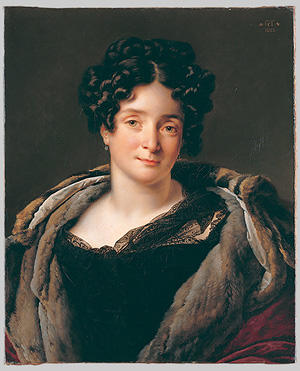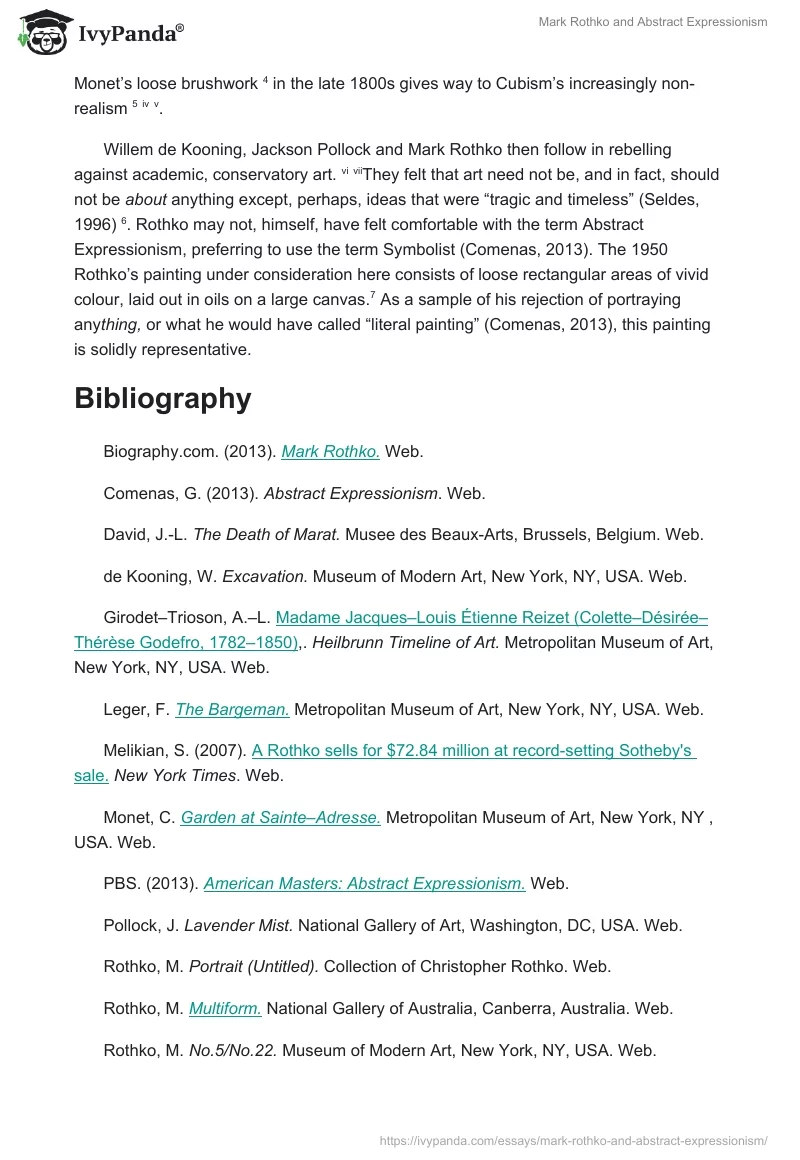Mark Rothko, a Latvian émigré, was a practitioner of Abstract Expressionism. His later work, for example, White Center (Yellow, Pink and Lavender on Rose), was non-representational, avoiding portraying a person, landscaper, or object (Rothko, White Center (Yellow, Pink and Lavender on Rose), 1950). Studying this painting offers an insight into the evolution of modern art styles (Comenas, 2013).
Mark Rothko was born Marcus Rothkowitz, in 1903 (reflecting current events in Europe in the 1940s, Rothkowitz changed his name to Rothko to avoid anti-Semitism). His family immigrated to Portland, Oregon. After a stint at Yale, he moved to New York City and took up the study of art. During the 1930s, he had individual shows, exhibited with a group of like-minded dissenters against representational art (‘The Ten’ were a group of 1930s artists who created a space for artists who were rejected, or rejected the Whitney Museum, to show their work, called the Mercury Gallery), and worked for the WPA (Biography.com, 2013)(The WPA, or Works Projects Administration, was a government program during the Great Depression that hired all sorts of people, including creative people, to give them useful work until the crisis was over). His work then still included recognizable figures and objects, for example in Portrait (Untitled) (Rothko, Portrait (Untitled), 1939). In the 1940s, his paintings displayed vague and suggestive shapes, for example, Multiform (Rothko, Multiform, 1948).
He was intrigued at first by children’s approach of art, and later, by myths, legends, and the philosophical writings of Friedrich Nietzsche. By 1943, he joined the artist Willem de Kooning in a manifesto to “make the spectator see the world our way – not his way” (Biography.com, 2013). These artists called themselves Abstract Expressionists, aiming to express ideas rather depict the world around them (Biography.com, 2013). His signature style, featuring colour blocks floating on large canvases have become so iconic that the work under consideration here – White Center (Yellow, Pink and Lavender on Rose) – sold for a record-breaking sum of 72.8 million US dollars in 2007 (Melikian, 2007).
The style that Rothko is most famously associated with is this Abstract Expressionism, which rejected any form of representation. This continued a decades-long movement away from the Neo-Classical attempt to capture reality in the paint. The second half of the 19th century witnessed a major break with obsessions over perspective and fabric texture. The Impressionists wanted, instead, to capture impressions of light and forms. Today it almost seems an inevitable progression. Monet’s loose brushwork (visible brushstrokes characterize, for example, his painting Garden at Sainte–Adresse) in the late 1800s gives way to Cubism’s increasingly non-realism (The Cubists are exemplified by Fernand Leger, for example in his painting The Bargeman, where the elements of a machine are separated from one another in a way that is unrecognizable).
Willem de Kooning, Jackson Pollock and Mark Rothko then follow in rebelling against academic, conservatory art. They felt that art need not be, and in fact, should not be about anything except, perhaps, ideas that were “tragic and timeless” (Seldes, 1996) (Jackson Pollock splattered and dripped his paint without an immediately obvious pattern (PBS, 2013). Willem de Kooning cut apart the forms he observed into shapes only distantly related to figures or landscapes from the real world). Rothko may not, himself, have felt comfortable with the term Abstract Expressionism, preferring to use the term Symbolist (Comenas, 2013). The 1950 Rothko’s painting under consideration here consists of loose rectangular areas of vivid colour, laid out in oils on a large canvas (this is not like carelessly painting a wall – the brush strokes are clear and seem deliberate rather than awkward). As a sample of his rejection of portraying anything, or what he would have called “literal painting” (Comenas, 2013), this painting is solidly representative.
Bibliography
Biography.com. (2013).Mark Rothko. Web.
Comenas, G. (2013). Abstract Expressionism. Web.
David, J.-L. The Death of Marat. Musee des Beaux-Arts, Brussels, Belgium. Web.
de Kooning, W. Excavation. Museum of Modern Art, New York, NY, USA. Web.
Girodet–Trioson, A.–L. Madame Jacques–Louis Étienne Reizet (Colette–Désirée–Thérèse Godefro, 1782–1850),. Heilbrunn Timeline of Art. Metropolitan Museum of Art, New York, NY, USA. Web.
Leger, F. The Bargeman. Metropolitan Museum of Art, New York, NY, USA. Web.
Melikian, S. (2007). A Rothko sells for $72.84 million at record-setting Sotheby’s sale.New York Times. Web.
Monet, C. Garden at Sainte–Adresse. Metropolitan Museum of Art, New York, NY , USA. Web.
PBS. (2013). American Masters: Abstract Expressionism. Web.
Pollock, J. Lavender Mist. National Gallery of Art, Washington, DC, USA. Web.
Rothko, M. Portrait (Untitled). Collection of Christopher Rothko. Web.
Rothko, M. Multiform. National Gallery of Australia, Canberra, Australia. Web.
Rothko, M. No.5/No.22. Museum of Modern Art, New York, NY, USA. Web.
Rothko, M. White Center (Yellow, Pink and Lavender on Rose). Private collection of the royal family of Qtar, Qtar. Web.
Seldes, L. (1996). The Legacy of Mark Rothko. Cambridge, MA: De Capo Press. Web.










